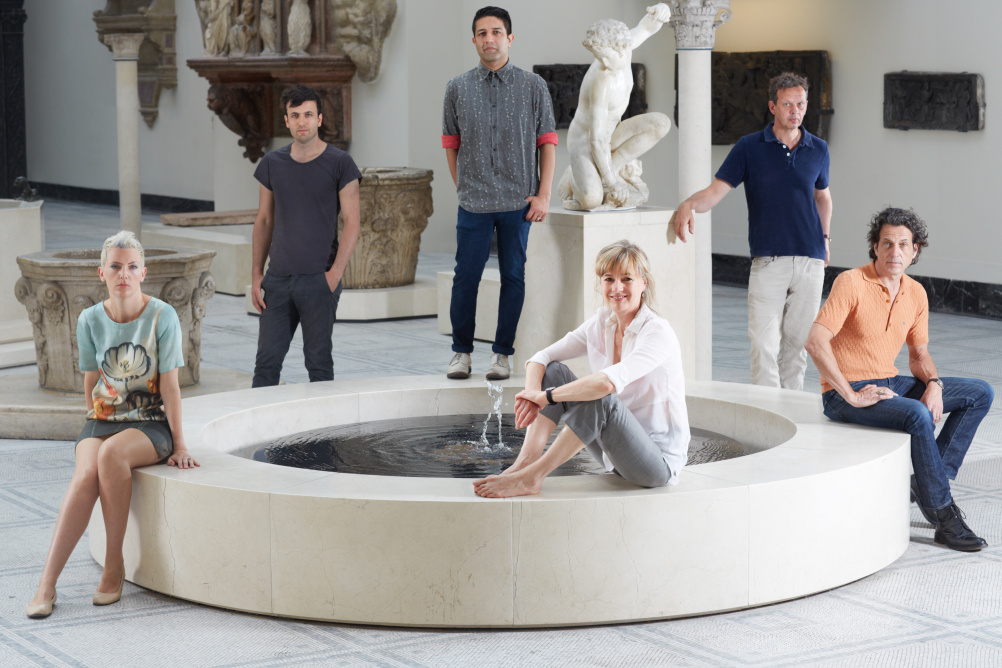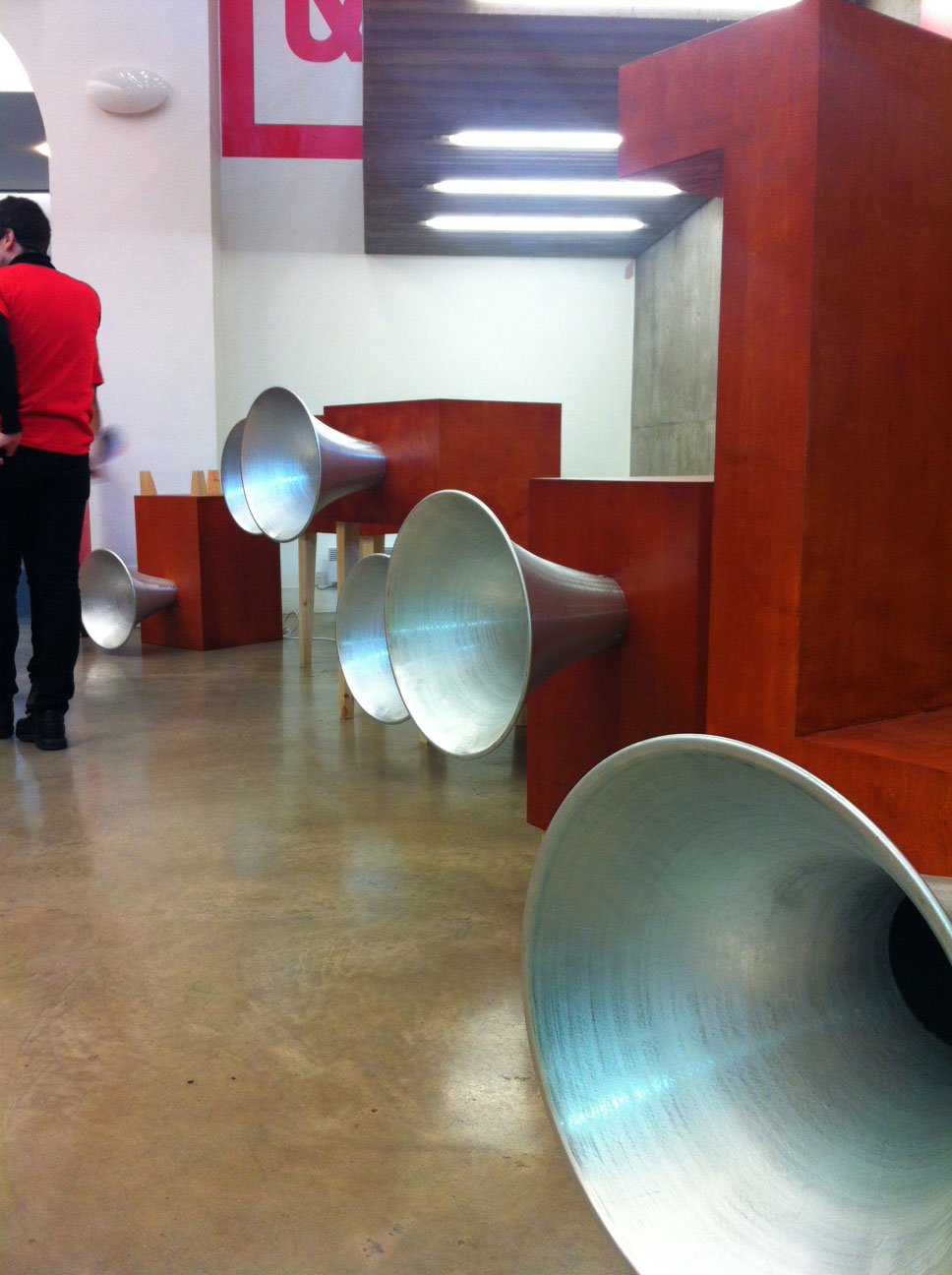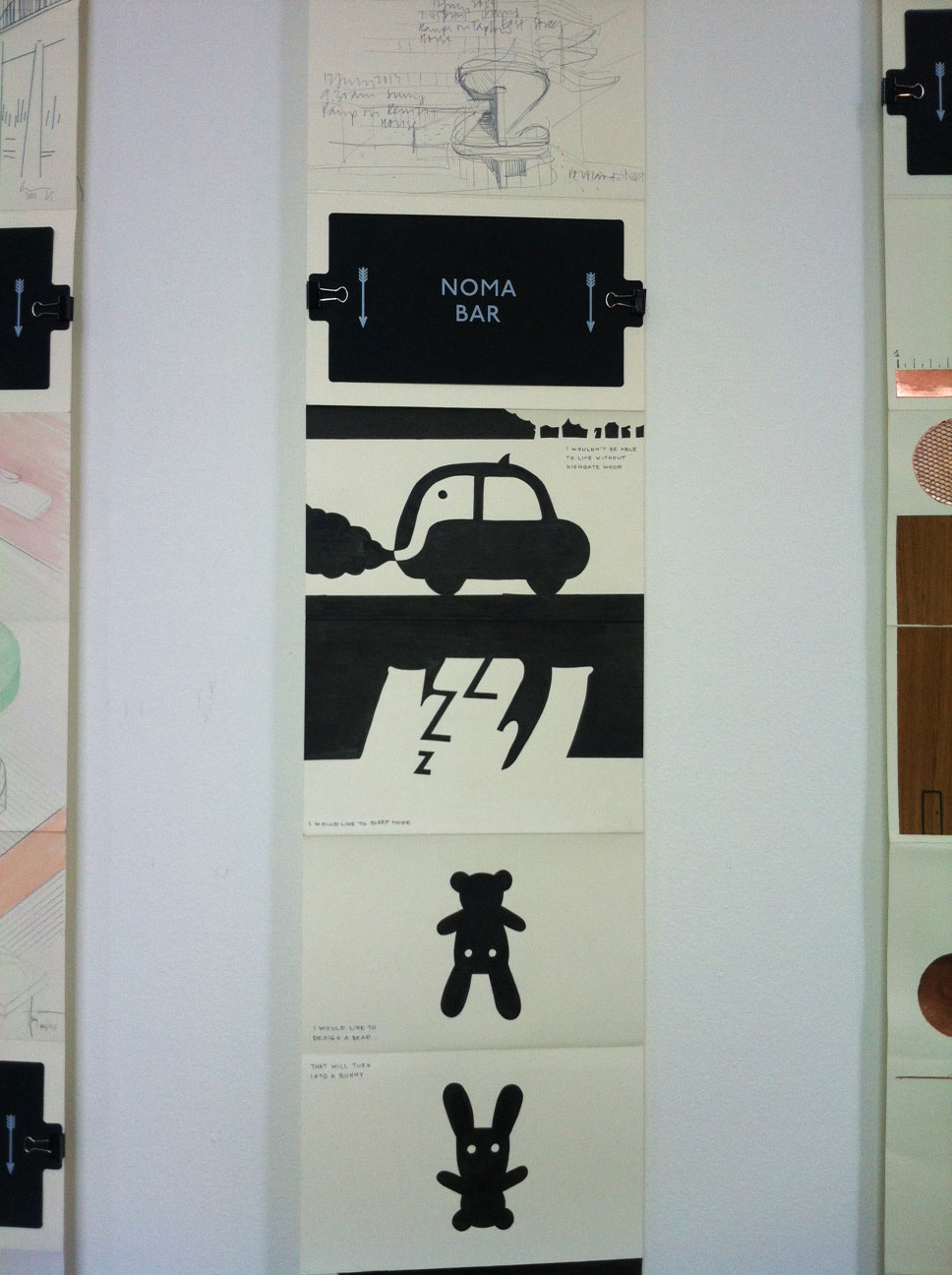London Design Festival at the V&A – the highlights
We travelled to the V&A to give you a first look at the LDF hightlights, talking to the designers and organisers first-hand.

Sir John Sorrell, chairman of the London Design Festival is a great champion of how good design can improve the quality of people’s lives.
It was with particular poignancy then that he pointed us toward Najla El Zein’s The Wind Portal installation and said ‘Sometimes things just have to be beautiful.’

And it is just that. A doorway of some 5000 paper windmills, a walkthrough installation that simulates wind as each one turns, seemingly at random, but actually in a controlled pattern.
They almost sound like running water – an unintended side effect perhaps, and they are at once beautifully playful and natural.
Zein says that the result is that you can almost ‘feel and hear the wind’ and that the space, (staircase N, end of Gallery 114e) – which was only recently covered with a roof – has been read as a ‘transition between inside and outside’ through the installation.

Far more inconspicuous but just as clever is the cork floor found by Gallery 112, which is a celebration of the material by FAT Architecture and Amorim – the world’s largest cork producer.
It goes by the name of The Progressive Extension of The Field of Individual Development, and the piece, which looks like this, is a repeated trompe l’oeil, geometric pattern, based on a scientific diagram of the cellular structure of cork.
Sean Griffiths, co-founder and creative director of FAT architecture, asks us by way of contrast, ‘Who’s old enough to remember cork tiles from 1970s?’ He’s referring to those monolithic slabs, which were glued to walls and floors.
The thing which makes this installation feel special is that it screams the potential of cork in quite an unobtrusive way.

Cork is harvested from the tree every nine years and the tree recovers, meaning that the process is more akin to farming then the felling of trees. So it’s very sustainable.
At the same time the piece proves instantly the aesthetic merits of the material. Set in a range of different tones it has a bouncy feel under-foot, while the molecular structure pattern is a nice design touch.
There’s a chance to see the V&A Residency Studios, including the work of Julia Lohmann and her research into Seaweed – an unlikely sustainable material with surprising properties.
She has also created an installation for LDF – a giant rigid structure in the form of a piece of seaweed, made out of seaweed of course.

Dotted around the museum is the God is in the Details project, a link-up between LDF, the V&A, Swarovski and a host of designers.
The idea is that the likes of Tom Dixon and Amanda Levete choose a perhaps overlooked object from the museum’s permanent collection and draw attention to a particular detail with a Swarovski lens.
In practice it’s a beautifully simple idea. You’ll find lenses on stands focussing on a detail, with some explanatory notes nearby.
Jeweller Stephen Webster talked us through a medieval gun with a handle carved from bone. He’d chosen to focus on the stock. Here he is in his own words:
We took in the display of three chair designs by Barber Osgerby, Amanda Levete, and Matthew Hilton, which are shortlisted for the Bodleian Libraries chair competition.
One of them will be chosen to furnish the historic Oxford library and the winner will be announced on Wednesday.

We also saw Ally Capellino’s wonderfully playful tubular chairs. The accessories designer has turned her hand to chairs using techniques normally used in making her leather bags.

Small leather embellishments on the fabric of the seat encourage you to sit with your legs together, or apart and one even has holes to put high heels through. If you were to sit with your knees against your chest, the high heels would slot through the holes and lock you in place. (Nobody was brave enough to try.)
The most playful thing you’ll see is Garden of Russolo by Yuri Suzuki who was on hand to give us a demo.

Faced with a series of funnels, you are encouraged to talk, shout or scream into them, before the sound is manipulated and projected back out at you in a new form.
We’re particularly keen on the one with a handle attached, which you crank quickly to deliver you message to passers by at an increasingly soaring pitch.

It can be found in the Sackler Centre where there’s a hive of activity in the Type Tasting Workshop, and a display of the Moleskine Sketch Relay, which saw note-books passed around the design community; everyone from Malcolm Garrett to Noma Bar to Hat-Trick design contributed.

You can also take in the small Alessi exhibition in the Sackler Centre, which looks to show the human side of industrial process and give an impression of how the factory is a place of craftsmanship, just on a very large scale.
A don’t-miss in the Sackler Centre is Cyclothymia by Alessandro Brighetti. It’s a sculptural work using electromagnets within a resin skull and oil-based ferrofluids.
The effect is completely mesmorising. Spikey organic forms seem to rise out of the liquid at the base of the skull before climbing all over it and retreating to start the cycle again.
Products can be observed at different stages in their production process – displayed in the cages used to transport them around the factory, and you can watch Household Goods Factory, a film made by Turkish video artist Ali.
Every year LDF gives you a chance to see the V&A’s Design Fund acquisitions, which have been newly added to its collection. Tucked away in room 16a on the ground floor, this year their additions include a 3D printed gun, The Liberator, which will no doubt cause quite a stir.

You might want to see Scholten and Baijing’s The Dinner Party in the Norfolk Music Room where tablewear has been used in a dinner context. Nobody is eating but they’ve attempted to give the sense that people just have been, so that everything on the table is used and there’s a sense of abandonment.
The accompanying soundtrack is the most impressive bit here though. Moritz Gabe and Henning Grambow have created an ethereal composition by tuning and playing the objects on the table.
-
Post a comment




